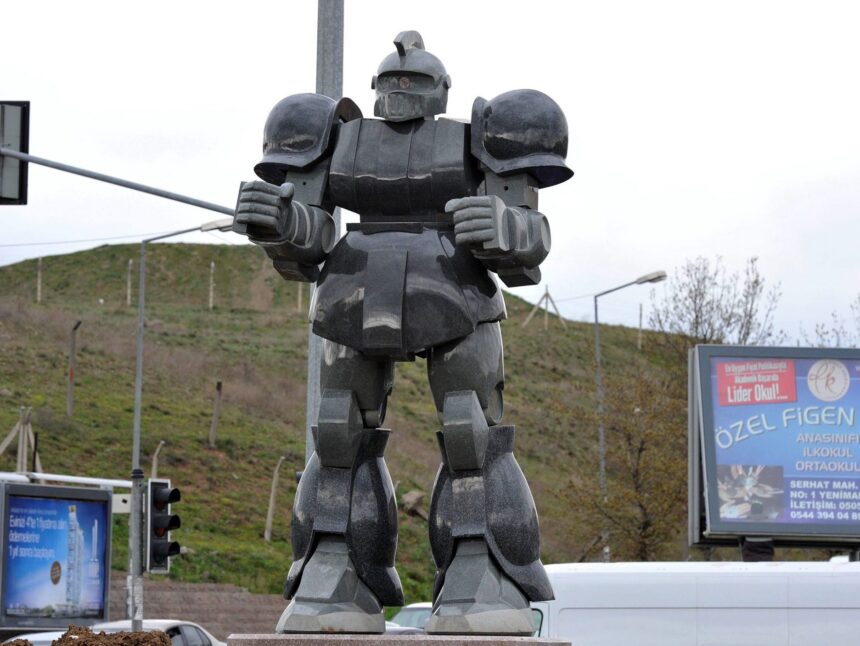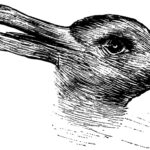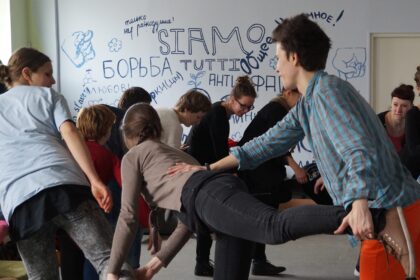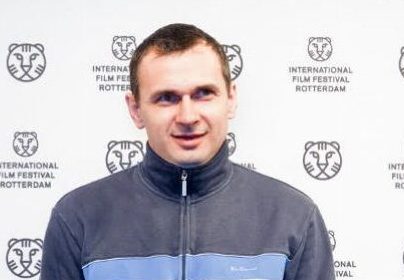Under Tightening Siege: The Turkish Contemporary Art Scene Under Erdoğan’s Rule
Erden Kosova
Only five years ago, the central debate within the Turkish contemporary art scene involved how to react to a process of accelerating cultural commercialization. It was a decade of monetization that, paradoxically, or perhaps logically, had emptied-out any capacity for critical reflection or institutional (self-) critique in the Turkish art world. The tension between the art establishment and activist circles rose to such a degree that the curator of the Istanbul Biennial ordered security guards to throw protesting activists out of the room during her opening press conference, as they silently let themselves fall, one by one, stock-still to the floor. The confrontation ended with mutual complaints and accusations in a police station. It seemed then that this fracture would inevitably deepen. But then, in the summer of 2013, something unexpected altered the terms of the confrontation: a social protest explosion occurred in the heart of Istanbul at Gezi Park, and expanded quickly to the whole country. Soon, the brutal reaction of the AKP (the ruling Justice and Development Party) government accelerated the ongoing tendency towards authoritarianism and one-man-rule. Ongoing peace negotiations with Kurdish parliamentary members were unilaterally suspended and the government did not hesitate to sideline ultra-nationalists and other isolationists. The swirl of hate politics led to the loss of lives, massive persecution of dissidents, and extreme polarization within the political field, as tensions invaded daily life. And all the while, the very structure of the Turkish economy decayed as the private sector plundered public properties and even the country’s very ecology.
Last year, after dismantling the basic structures of the republican democracy, secularism and the constitutional state, Turkish president Recep Tayyip Erdoğan, declared victory with his now infamous hubris. Erdoğan’s AKP party swiftly established its long-awaited political hegemony and the nouveau-riche entrepreneurs around him (including his relatives) gained the upper hand in the nation’s economy. The only thing that was still missing, Erdoğan said plainly enough, was obtaining cultural hegemony. The symbolic defeat Erdoğan tasted when confronted by the richness and radical diversity of cultural heterodoxies at Gezi Park–including the memory of past revolutionary movements, humor magazine traditions, football culture, the language of social media, and queer subjectivities–led him to take counter measures. Born was the discursive misery of his propaganda machine, an apparatus, he insisted, necessary for waging a ‘’cultural war’’ against Turkey’s alienated, foreign-spirited Leftists in order to establish full dominance of the ‘’national and the native’’ sphere. This phrase even evolved into a motto of the AKP, despite the fact that it is a stupid doubling of terms that begs the obvious question: how could something be national without also being native?
To understand the weakness of cultural opposition to this new culture war we need to grasp several historical factors specific to the Turkish context. Firstly, the intellectual energy that accompanied the rise of the Islamist movement in 1990s is gone. Initially, the movement defined itself through political protest and was widely considered much more informed about contemporary theory than even their socialist classmates. Islamicist journals and newspapers quoted Levinas, Derrida and Foucault, and debated the possibility of a pluralistic co-existence within a multilevel legal system. Today, nothing of this debate remains. It is a posse that has slipped into middle-class conformism while cynically enjoying the benefits of sixteen years of governmental power.
Secondly, this ”golden generation,” prepared by the cult of Fethullah Gülen–mastermind behind a hegemonic, decades-long project aimed at transforming the Kemalist state (founded on Atatürk’s principles) from within–was forsaken after falling-out with Erdoğan. They had once staffed academic, military and legal departments and police headquarters, as well as forged established links with the Western world. At the same time, they promoted a fake atmosphere of civic dialogue by instrumentalizing a left-liberal discourse in order to appear more democratic than they actually were, even as they launched judicial witch hunts against secular and socialist Turks. The massive persecution inflicted on Gülen’s acolytes after their idiotic attempt at a coup d’etat generated a huge vacuum within intellectual Islamist circles.
Thirdly, the transformation of the AKP into authoritarian, single-person-rule led to the suspension of all possibilities for inner debate, since the leader’s will is officially equated with that of the entire nation, despite his ridiculously erratic and incompetent conduct. Meanwhile, nearly all veteran party members in the AKP were replaced by Erdoğan’s relatives or opportunist renegades from all other political positions. There is, therefore, no longer any space for criticality within governmental ranks.
The fourth and final factor of this extreme situation is the mindset of the governing political movement itself, an ideology based solely on reaction and resentment, which greatly inhibits any sort of creativity. This reactionary mindset is not only based on the apparent resentment against the secular Republic of the twentieth century. It harks still further back to complex intersections within the Ottoman social structure, a situation charged with discrepancies between ethnically diverse, religiously heterogeneous metropoles and mono-ethnic peripheries, as well as between coastal cities and landlocked cities, but also between various class articulations and cultural identities.
Despite its superficial and highly selective rhetoric about imperial revisionism, the Islamist movement cannot build upon its own Ottoman or Islamic traditions of cosmopolitanism, especially not the high culture of the empire’s late period. For example, the modernist architecture of the early Republican era is today being recklessly demolished and replaced with cast cement copies of sixteenth century mosques. The result is either ossified reproductions, or provincial kitsch. Erdoğan even invites young people to learn history from the historical soap operas that are produced by state-run television, which is of course loaded with ludicrous falsifications.

Erdoğan’s cultural war is being transmitted through multiple channels, and includes the massive expulsion of academics, journalists, human rights activists, and other opponents. His judiciary has confiscated people’s commercial property, and engaged in a policies of blackmail and intimidation by filing thousands of libel lawsuits while ruthlessly prolonging the imprisonment of rivals arrested by party controlled police forces. Much of the same applies to artists and cultural workers. Photographic artists and documentary directors caught recording street commotions have been arrested; stage actors and actresses with high public visibility receive abuse by pro-government media and are then blacklisted by the film and TV industry sector for their critical opinions; cartoonists are fired and humor magazines have been put under legal and economic pressure using the pretext of sexual and religious sensitivities. Many cultural activities of the LGBT collectives have also recently been banned.
Still, thus far at least, the field of contemporary art has not been systematically targeted. While several people from the scene have been exposed to repression, this has mostly been due to their sympathies for the rights of the Kurdish people, or for making references to the Armenian Genocide (always taboo), or possibly for making critical remarks about historical figures adored by conservatives and ultra-nationalists. The best known of these cases is Osman Kavala, a philanthropist businessman who had been highly active in the art field via his not-for-profit organization Anadolu Kültür, and the cultural space known as Depo Istanbul. These institutions have run exhibitions, seminars, educational and publication projects, as well as opening-up a unique independent space for artists, documentarians, researchers and student to operate within. In addition, these projects frequently focus on the rights of ethnic and religious minorities and the cultural diversity of the Anatolian region. Although not a party member himself, Kavala has been influential within a coalition party called HDP that links Kurds with socialists, and which has been heavily persecuted by the Erdoğan government and its ultra-nationalist partners (the two co-directors of the party were imprisoned along with the half of its MPs and mayors). In October of 2017 Kavala was arrested after a pro-government campaign portrayed him as ‘’the local Soros.” He has been kept in prison for 16 months without any indictment. Meanwhile, the offices of the organizations associated with him have been raided, many of the staff members, and even advisory board members, have been interrogated. Very recently, Turkish prosecutors requested an aggravated life sentence against him and 15 other people (journalists, theater actors, NGO workers) and alleged that they are the ”head executives” who masterminded the Gezi Park protests in order to overthrow the government.
Repression intensifies mostly around the ‘’Kurdish issue.” Hundreds of academicians have been purged from Turkish universities and brought to court after they collectively signed a peace petition. Their passports (and in some cases their spouses’ as well) have been confiscated, and their rights to retirement or to even working as a public servant have been abolished. There are several artists and art historians among the peace academicians now awaiting trial. As for individual cases, Pınar Öğrenci, a contemporary artist from Istanbul, was arrested during a peace parade in the Kurdish city of Diyarbakır and sentenced to seventeen months, but the sentence has been postponed for five years.
Fatoş İrwen, a performance artist, was sentenced to nearly two years after she was coincidentally caught in a clash between police and demonstrators on her way home from a doctor’s visit, again in Diyarbakır. Zehra Doğan, a journalist and a painter, has recently been released from her two year imprisonment for painting the scenery of a Kurdish city that was destroyed by the Turkish army and then sharing this work on social media. More ironic still is the fact that the realistic painting was based on a photograph that previously appeared in newspapers. In prison, Doğan was forbidden to own any painting or drawing materials. She painted in her prison cell using excrement and her own menstruation blood, though these works too were being confiscated by the prison administration.
There are also initial signs of direct intervention from the state authorities into the field of contemporary art. A couple of years ago, the Turkish embassy in Spain forced organizers of an art exhibition in Madrid to re-publish a catalogue with the phrase ‘’Armenian Genocide’’ eliminated. The event had received partial funding from the Turkish State. In 2016 the Ministry of Culture of Turkey also withdrew unilaterally from Creative Europe, a funding program of the European Union, because one of the musical projects entitled Aghet that was to be performed by the Dresden Symphony Orchestra again used the term ‘’genocide’’ in its introductory text, referring to the catastrophic cleansing of Armenian people from Anatolian soil in 1915. The decision deprived several Turkish artists of a major financial resource. In the long run, Erdoğan’s government seems keen on cutting all artistic links to Western institutions. There have also been cases of outright censorship. In the last couple of years works of art containing nudity displayed at art fairs have been confiscated by police who claimed that they had received complaints from the public. There is also a visible rise in cases of vandalism against public sculptures and monuments showing female bodies or which make references to paganism. Sympathizers of the regime increasingly appeal to violence, and objectionable works of art are becoming legitimate targets. In the last couple of years organized groups raided gallery openings decrying the consumption of alcohol, or they threatened to interrupt cultural activities because they found their content disrespectful of Turkish historical heroes.
When one is in the middle of this siege atmosphere it is impossible not to be cautious, even self-censoring, a tendency that has become a widely debated topic. For example, the curatorial choices of recent editions of the Istanbul Biennial indicate a growing moderation in political tone. While appearing fully apolitical would alienate the local contemporary art scene and the secular opposition, curators strive to avoid crossing a level of provocation that would lead to a confrontation with the ruling regime. But there are also cases that exceed the limits of restraint or moderation. In 2016, Aksanat, an art space in Istanbul owned by the Sabancı family holding, cancelled a group exhibition entitled “Post-Peace,” without even notifying curator Katia Krupennikova. One of the works, Belit Sağ’s video piece Ayhan and Me, which was based on the life of one of the most ruthless killers of the Turkish Gladio, a secret armed group employed by the Turkish intelligentsia to fight against the Kurdish guerrillas, was found too provocative by the institution. Another prominent bourgeois family, the Koç group, has larger investments in the field of contemporary art. Next year, a contemporary art museum will be added to their existing investment portfolio of art infrastructure, but the administration is undoubtedly already brooding about the prospect of (self-) censorship and other complications.

It’s easy to imagine the distress levels operating within Turkish art institutions. Typically owned by bourgeois families with financial capital belonging to the old status quo, ultimately they will endorse concessions about socially critical works of art. The contemporary art scene, which was characterized by its strident political tone in the nineties, has now lost its credibility after a decade of rapid commercialization and a tendency towards psychologism and individualism. This occurrence might also have been conditioned by a series of other factors: the fatigue of the politically engaged art practices that previously targeted militarism and nationalism; the failure of bringing this critical content to larger audiences and public spaces; the nauseating speed of the country’s political agenda; and social media’s appropriation of the taboo-breaking role which previously belonged to socially engaged artistic practices. Some events like the Tüyap Art Fair and certain group exhibitions organized by feminist and LGBT collectives, as well as some alternative art spaces like Karşı Sanat, and other artist-run spaces have recently opened, although mainly in Kadıköy, on the Anatolian side of Istanbul. Some web-based e-journals such as e-scope and EK Kültür can be counted among attempts at articulating a double-critique both against the political collapse of the country and also in opposition to the economic politics of the existing art establishment. Still, with the impossibility of heroic interventions into public space–an action that would lead to instant persecution–critical Turkish artists are left with the task of sustaining modest but sustainable platforms of solidarity that, hopefully, will one day attract and organize energies leading to a future state of collective criticality, perhaps even emancipation.
Erden Kosova is an art critic living currently in Berlin and Istanbul. He has contributed to the organization of the exhibition series Herbstsalon held by Maxim Gorki Theater. Kosova works also as an editor for the ‘Syndromes of the Present project’ initiated by Galit Eilat and the Istanbul-based e-journal ‘red-thread.org‘.
Additional Reading:
http://www.osmankavala.org/en/
http://red-thread.org/en/article.asp?a=67
http://artseverywhere.ca/2017/08/28/artistic-freedom-turkey/










